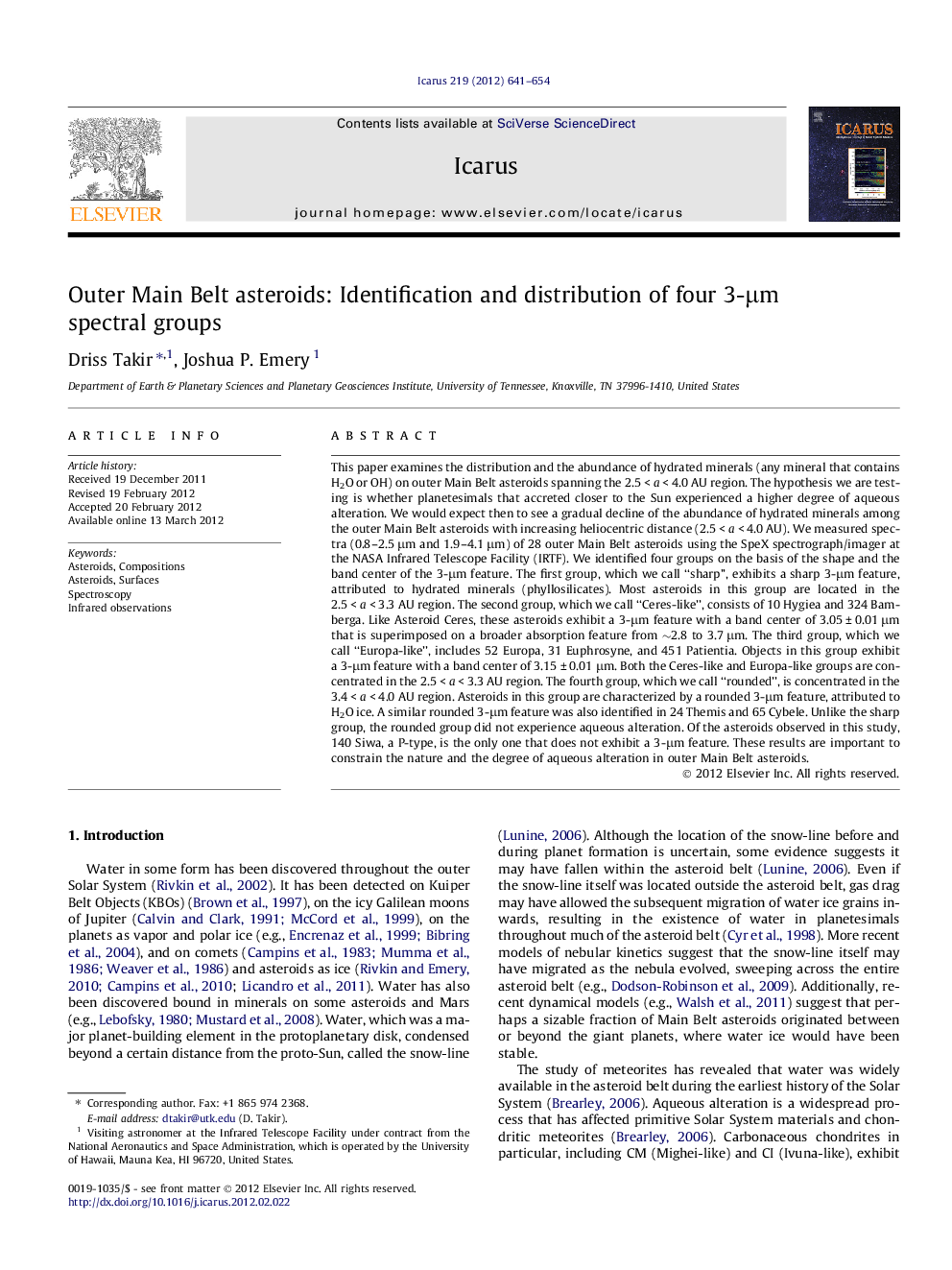| کد مقاله | کد نشریه | سال انتشار | مقاله انگلیسی | نسخه تمام متن |
|---|---|---|---|---|
| 1773595 | 1021140 | 2012 | 14 صفحه PDF | دانلود رایگان |

This paper examines the distribution and the abundance of hydrated minerals (any mineral that contains H2O or OH) on outer Main Belt asteroids spanning the 2.5 < a < 4.0 AU region. The hypothesis we are testing is whether planetesimals that accreted closer to the Sun experienced a higher degree of aqueous alteration. We would expect then to see a gradual decline of the abundance of hydrated minerals among the outer Main Belt asteroids with increasing heliocentric distance (2.5 < a < 4.0 AU). We measured spectra (0.8–2.5 μm and 1.9–4.1 μm) of 28 outer Main Belt asteroids using the SpeX spectrograph/imager at the NASA Infrared Telescope Facility (IRTF). We identified four groups on the basis of the shape and the band center of the 3-μm feature. The first group, which we call “sharp”, exhibits a sharp 3-μm feature, attributed to hydrated minerals (phyllosilicates). Most asteroids in this group are located in the 2.5 < a < 3.3 AU region. The second group, which we call “Ceres-like”, consists of 10 Hygiea and 324 Bamberga. Like Asteroid Ceres, these asteroids exhibit a 3-μm feature with a band center of 3.05 ± 0.01 μm that is superimposed on a broader absorption feature from ∼2.8 to 3.7 μm. The third group, which we call “Europa-like”, includes 52 Europa, 31 Euphrosyne, and 451 Patientia. Objects in this group exhibit a 3-μm feature with a band center of 3.15 ± 0.01 μm. Both the Ceres-like and Europa-like groups are concentrated in the 2.5 < a < 3.3 AU region. The fourth group, which we call “rounded”, is concentrated in the 3.4 < a < 4.0 AU region. Asteroids in this group are characterized by a rounded 3-μm feature, attributed to H2O ice. A similar rounded 3-μm feature was also identified in 24 Themis and 65 Cybele. Unlike the sharp group, the rounded group did not experience aqueous alteration. Of the asteroids observed in this study, 140 Siwa, a P-type, is the only one that does not exhibit a 3-μm feature. These results are important to constrain the nature and the degree of aqueous alteration in outer Main Belt asteroids.
► We measured NIR spectra of 28 Outer Main Belt asteroids using SpeX at the NASA IRTF.
► We identified four groups on the basis of the shape and the band center of the 3-μm feature.
► These results provide important constraints on the nature of aqueous alteration in asteroids.
Journal: Icarus - Volume 219, Issue 2, June 2012, Pages 641–654